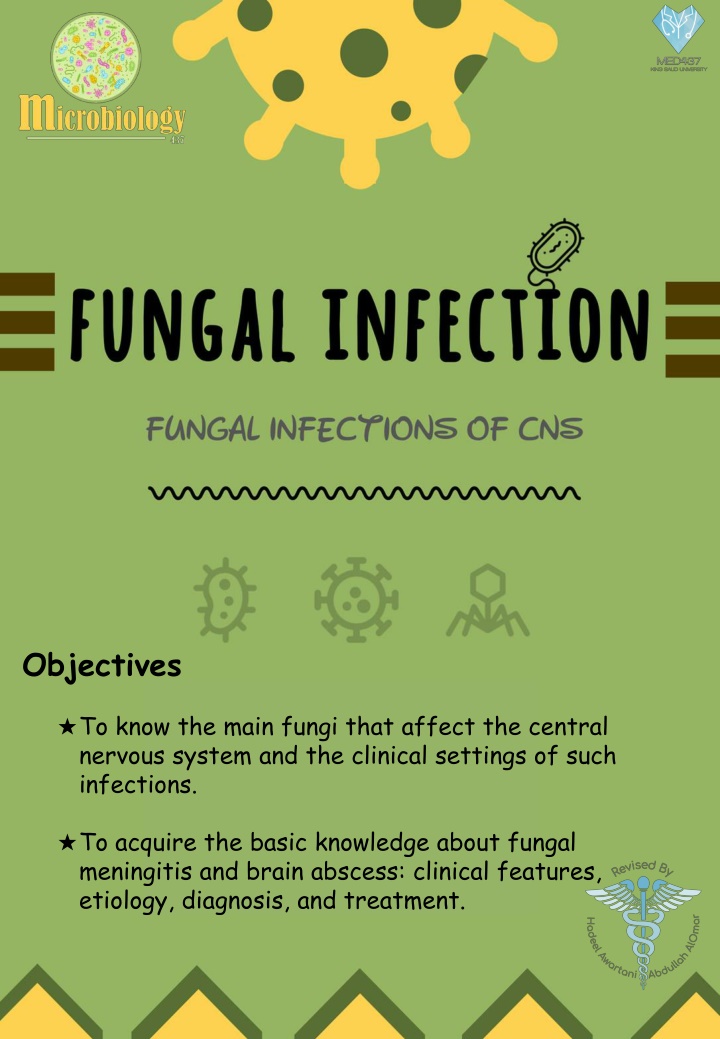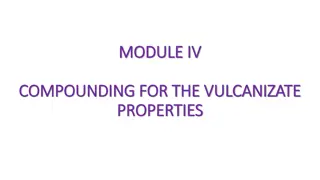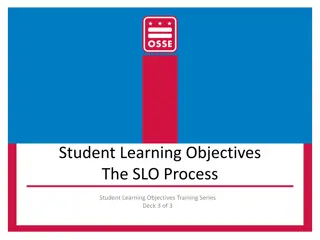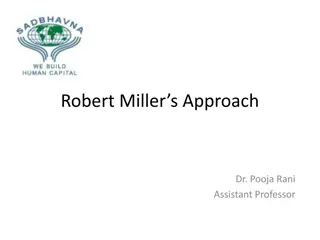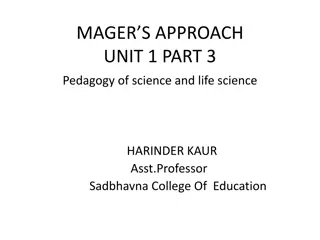Objectives
Explore the main fungi affecting the CNS, focusing on fungal meningitis and brain abscesses. Learn about clinical features, etiology, diagnosis, and treatment strategies for such infections.
Download Presentation

Please find below an Image/Link to download the presentation.
The content on the website is provided AS IS for your information and personal use only. It may not be sold, licensed, or shared on other websites without obtaining consent from the author.If you encounter any issues during the download, it is possible that the publisher has removed the file from their server.
You are allowed to download the files provided on this website for personal or commercial use, subject to the condition that they are used lawfully. All files are the property of their respective owners.
The content on the website is provided AS IS for your information and personal use only. It may not be sold, licensed, or shared on other websites without obtaining consent from the author.
E N D
Presentation Transcript
Objectives To know the main fungi that affect the central nervous system and the clinical settings of such infections. To acquire the basic knowledge about fungal meningitis and brain abscess: clinical features, etiology, diagnosis, and treatment.
Fungal Infection of Central Nervous System CNS infections are both diagnostic challenge and medical emergency. Delay in diagnosis and initiation of appropriate therapy will lead to high mortality rate or in permanent, severe neurological damage. Fungal infections of the CNS are not common However, they are being increasingly diagnosed. Why? Because of the increase of the number of immunocompromised patients. Risk Factor HIV/AIDS Hereditary immune defects Diabetes mellitus Immunosuppressive medications Solid organs transplantation Hematopoietic stem cell transplant (HSCT) Surgery or trauma Neutropenia Malignancies Indwelling catheters (e.g. candidemia --> CNS seeding) How fungi reach the central nervous system? Fungi reach the central nervous system by different mechanisms: 1. Hematogenous spread 2. Local extension from the paranasal sinuses, the ear, or the orbits. 3. Traumatic introduction: Surgical procedures Head trauma Injections lumbar punctures
Clinical Syndromes These clinical syndromes can occur either alone or in combination: 1- Meningitis: 2- Brain abscess: Sub acute or Chronic With or without vascular invasion Certain clinical syndromes are specific for certain fungi can give us a clue. Etiology Several fungal agents can cause CNS infections: Yeast Mould Dimorphic Candida spp Aspergillus spp Histoplasma spp Cryptococcus spp Zygomycetes Blastomyces spp Exophiala spp Coccidioides spp Cladophialophora bantiana Paracoccidioides spp Rhinocladiella mackinziei Penicillium marneffei and Others Cryptococcal Meningitis: AIDS is the leading predisposing factor Etiology Cryptococcus neoformans is the most common etiology Capsulated yeast cells Naturally in Pigeon habitats Acquired by: Inhalation Clinical syndromes: Mainly meningitis
Candidiasis Etiology Candida albicans, and other species including C.glabrata, C. tropicalis C. parapsilosis, and C. krusei. Can reach the CNS Hematogenously(not inhalation it s normal flora) Surgery, Catheters Indwelling catheter and fever unresponsive to antibacterial agent Clinical syndromes Cerebral abscesses(sometimes) Meningitis(mostly) Etiology Aspergillus fumigatus(common globally), but also A. flavus(common in our region), and A. terrus Clinical syndrome Usually brain abscesses (single or multiple) Can reach the CNS Spread Hematogenously May also occur via direct spread from the anatomically adjacent sinuses, Angiotropism(infarction and hemorrhagic necrosis) Common risk factors include Hematological Malignancies Transplantation Cancer Chemotherapy Prognosis Mortality rate is high
CNS Zygomycosis (mucormycosis) The rhinocerebral (it is Mucorales) form is the most frequent presenting clinical syndrome in CNS zygomycosis. Mortality is high (80- 100%) Progression is rapid, Zygomycetes e.g. Rhizopus, Absidia, Mucor Fast growing fungi ( all of them are Mucorales ) Etiology: Diabetes with ketoacidosis because it can thrive in high acidic condition, in addition to other risk factors Risk factors: The clinical manifestations of the rhinocerebral form start as sinusitis, rapidly progress and involve the orbit, eye and optic nerve and extend to the brain could be inhaled Facial edema, pain, necrosis, loss of vision, black discharge Angiotropism due to blood vessel invasion; As angio-invasion is very frequent Rapid diagnosis Control the underlying disease Early surgical debridement Appropriate antifungal therapy To improve the outcome: Phaeohyphomycosis Fungal infections caused by dematiaceous fungi darkly colored due to melanin pigment Neurotropic fungi Usually brain abscess, and chronic CNS infections: Reported in immunocompetent hosts Risk factors: not immunocompromised Rhinocladiella mackenziei ( Mainly reported from Middle East) Cladophialophora, Exophiala , Curvulara, Fonsecaea. Etiology:
Other Infections: Histoplasmosis /Blastomycosis /Coccidioidomycosis /Paracoccidioidomycosis Caused by primary pathogens Sub acute or chronic Meningitis (common), and brain abscess Following a primary infection, mainly respiratory mainly by inhalation then through blood goes to CNS Diagnosis: Clinical features (history, risk factors, etc): (if HIV screen for cryptococcus coming from US think of dimorphic) Not Specific (Past surgery is important in history) Good value in diagnosis and therapy monitoring Neuro-imaging: radiological finding CSF examination (cell count,chemistry) Histopathology (granuloma in TB) Microbiology Lab Investigations: Lab Diagnosis: Clinical Samples: CSF - Biopsy- Pus, aspirate - Blood (for serology) 1. CSF Abnormalities: - Not specific for Fungal infections Cell count Glucose level (low) because it is consumed by the organism Protein level (high) We check color too (bloody , turbid) 2. Direct Microscopy: - Fungal stains: Giemsa, GMS, PAS, India ink (mostly for Cryptococcus neoformans for the presence of polysaccharide capsule) 3. Culture: Fungal media:SDA (Sabouraud dextrose agar) BHI (brain & heart infusion) agar, other media if needed. 5. Serology: for detection of antigen or antibody Candida Aspergillus Cryptococcus Histoplasma Blastomyces Coccidioides Paracoccidioides 4.PCR: The most accurate test
CNS infection Direct microscopic Culture Serology Cryptococcal Ag (capsule) Latex agglutination Cryptococcal Meningitis Yeast cells A Capsulated (india ink) Yeast Yeast cells and pseudohyphae B Candidiasis Yeast Manann Ag (cell wall) Aspergillosis Septate branching hyphae C Hyaline mould Galactomannan Ag Hyaline mould Fast growing Zygomycosis Broad non-septate hyphae D No serology available Dematiaceous mould Phaeohyphomycosis Brown septate hyphae -D- Glucan* *Glucan is found in the cell wall of the fungi So its non-specific test Serology: -D- Glucan,For diagnosis of invasive fungal infections except cryptococcosis and zygomycosis Management 1. Control of the underlying disease 2. Reduce immunosuppression, restore immunity if possible 3. Start antifungal therapy promptly: Polyenes/ Azoles/ Echinocandins 4. Consider surgery in certain situations (abscesses) 5. Key of treatment is early diagnose Antifungal Therapy: CNS fungal infection Treatment Amphotericin B (combination with Flucytosine) Cryptococcal meningitis Caspofungin, Fluconazole, Voriconazole, Amphotericin B CNS Candidiasis (depend on patient +some are resistance to azole) Voriconazole(drug of choice), Amphotericin B (Combination of voriconazole and Caspofungin) CNS Aspergillosis Amphotericin B (in high dose followed by surgery) CNS Zygomycosis
Drs Notes: - CNS fungal infections are generally rare but they re very dangerous and has a very high mortality rate this why we have to diagnose them early. - They re mostly present in immunocompromised patients but could also present in normal ppl - When a patient has sinusitis the risk of them developing a fungal CNS infection increases bc the fungi could reach the CNS through the paranasal sinus (if the patient is immunocompromised the risk will be higher) - Mold fungi is mostly in north america - the most common infection In uncontrolled HIV patient is cryptococcal meningitis. - Cryptococcus neoformans has a polysaccharides capsule - The most important risk factor for cns zygomycosis is diabetic with ketoacidosis and also iron overload or iron chelating agents - Rhinocerebral mucromyocis is the most frequent presenting clinical syndrome in CNS zygomycosis. - It start as a sinusitis, swelling and redness of the tissue around the eyes and nose, then reach the orbit and the optic nerve. - It has ability to invade and infect the blood vessels (angiotropism) where it will lead to infarction & necrosis and this will make the areas around the eyes and nose darker. - Zygomycosis is the most fatal infection 80-100% - Phaeohyphomycosis is caused by dematiaceous fungi (dark colored) - Mostly in immunopment but when present in immunocompromised it will be more severe - Yeast mostly cryptococcus, meningitis and in HIV patients and caused by capsulated organism - Candida could cause meningitis or brain abscess - Mould aspergillus, mostly brain abscess - Mucromyocis starting from rhinocerebral, rapid progression, & angiotropism - Phaeohyphomycosis ( dimorphic) caused by dematiaceous in immunocompetent & mostly acquired by inhalation
Drs Notes: Risk factors : AID , diabetes or following trauma surgery ear or sinus infection How it reaches the CNS :hematogenous spread , local extension,trauma Some organisms only cause meningitis some cause abscess but others cause both Common etiologies : cryptococcus, candidas, aspergillus, zygomycetes Dimorphic is common in north america and rare in saudi Brain abscesses can be caused by a black pigmented fungi Cryptococcus:AIDS is the main predisposing factor Most commonly cryptococcus neoformans. It's a encapsulated yeast (unlike candida), its acquired by inhalation and causes mainly meningitis Candidiasis :we don't acquire it from the environment the source is our own flora, it reaches the CNS most commonly by hematogenous spread Or following neurosurgery It causes meningitis and sometimes abscesses The most common etiology is candida albicans Aspergillosis: it usually causes brain abscesses it can reach the CNS by a hematogenous spread or local extension it can invade the eye and extend to the brain in this case it's called : Rhinocerebral aspergillosis The most common etiology is aspergillus.fumigatus and A.flavus zygomycosis(mucormycosis):mostly present as rhinocerebral mucormycosis Starting as sinusitis and extending to the brain Patient will have sinusitis then they will have facial edema then black discharge it will causes necrosis,invade the eye and invade brain through optic nerve So they will have facial edema and black discharge High risk:uncontrolled diabetic patient with ketoacidosis Once it involves the brain its very hard to treat (80-100% mortality) They love acidic environment and glucose Pheohyphomycosis:its a dark pigmented fungi Usually causes brain abscess Rhinocladiella mackenziei is endemic in middle east(100% mortality)
Drs Notes Case 1: 35 year old male AIDS patient CD4 count less than 100 cells/mm3 Developed non-specific symptoms consisting of fever and headache What investigations you will do ? CSF (lumbar puncture) MRI/CT Investigations What will you request for CSF ? -Direct microscopy (gram staining and india ink) It showed capsulated yeast cells -biochemistry(glucose,protein,cell count with differentiation -culture -Serology latex agglutination was positive (cryptococcus antigen) Case 2: 55-year old female with poor compliance suffering from diabetes with ketoacidosis 3rd Jan 2011: visited the ophthalmology clinic 13 Jan 2011: the patient was admitted to KKUH in the MICU In severe condition with unilateral periorbital erythematous edema Imaging of the face showed signs of subcutaneous tissue invasion associated With cutaneous thickening Invasion and extension to the homolateral nasal cavity was observed, also observed in the meninges and adjacent to the right temporal lobe Suggesting extension of the lesion to the CNS Extensive secretion drainage was performed, very extensive surgery So what sample will you prepare (investigations)? 1-CSF 2- biopsy tissue 3-aspirate Microscopic examination : GMS(silver stain), PAS(periodic-acid-schiff) Broad irregular non-septate hyphae (zygomycetes) Septate hyphae were also observed(aspergillus) Extensive surgery, tissue debridement Amphotericin B, Caspofungin, voriconazole were administered immediately Patient died 14 days later
SUMMARY Cryptococcal Meningitis. Candidiasis CNS Aspergillosis. CNS Zygomycosis. Pheohyphomyc osis. -Etiology: cryptococcus Neoformans. -Capsulated Yeast cells. -AIDS is the leading predisposing factor. -Naturally in pigeon habitats -Acquired by inhalation. -Mainly meningitis. -Etiology:Mainly Candida Albicans. -Candida reach CNS by: Hematogenously,s urgery, catheters,Indwelli ng catheter and fever unresponsive to antibacterial agent. -Clinical Syndrome: 1- Cerebral microabscesses> 2-Cerebral abscesses> 3-Meningitis. 4-Vascular complications (infarctions.hemor rhage) - Etiology:Aspergillu s Fumigatus &A.Flavus. -Usually cause Brain abscesses (single or multi) -Complications of: Hematological malignancies, cancer chemotherapy, transplantation. -Reach CNS: Hematogenously- Spread from adjacent sinuses, Angiotropism. -HIGH mortality. -Etiology: Zygomycetes. -Most frequent form of clinical syndrome in CNS Zygomycosis is: Rhinocerebral form. -High mortality. -Rapid Progression. -Risk factors: Diabetic Ketoacidosis. -Clinical Manifestations: Sinusitis-orbit,eye &Optic nerve involvement- extend to brain, face edema,necrosis,vi sion loss, Angiotropism. --Etiology: Rhinocladiella Mackenziei. -Caused By Dematiaceous fungi (Neurotropic fungi) -CNS infection: brain abscesses, and chronic. - Immunocompeten t hosts. Diagnosis 1-clinical features /2-Neuroimaging 3-Lab investigations Lab diagnosis; samples(CSF-biopsy-pus-aspirate-blood) 1-CSF 2-Direct microscopy 3-Culture 4-Serology 5-PCR Cryptococcal meningitis therapy CNS Candidaisis therapy. CNS Aspergillosis therapy CNS Zygomycosis therapy Amph-B with Flucytosine Amphotericin-B Voriconazole then Amph-B Amph-B
Quiz: 1.An AIDS patient with a CD4 count in the range 100 to 50 cells/mm3 complain of headache and neck of stiffness and appear disoriented. The possibility of fungal meningitis is considered and tests for the common fungal etiology of meningitis ordered. Tests included direct examination of spinal cord for the organism and serology. The purpose of serology test is detection of ... 4- saad is 55 years old male gym coach poor compliance suffering from diabetes with ketoacidosis and he visited ophthalmology clinic because he complain from vision loss and we do microscopy stain that show board non-septate hyphae which of the following is causative organism ? A. Antibody to capsular polysaccharide B. Antibody to cell wall mannoprotein C. Capsular polysaccharide D. Cell wall mannoprotein A. Zygomycosis B. Candidiasis C. aspergillosis D. Phaeohyphomycosis 2.In Q.1 which one of the following antifungal therapy is appropriate to this case? 5-In Q.4 which one of the following antifungal therapy is appropriate to this case? A. Amphotericin B B. Voriconazole C. Caspofungin D. Echinocandins A. Amphotericin B B. Flucytosine C. Caspofungin D. Voriconazole 3.Candida albicans is isolated in blood culture from patient in a surgical intensive care unit. This most likely source of infection is ... 6-Which one of the following is more correct? A. phaeohyphomycosis causes brain abscess in an immunocompetent host B. phaeohyphomycosis is a hyaline septate hyphae A. A healthcare worker B. A visitor C. The patient D. The surgeon C. aspergillus.flavus and rhinocladiella mackenziei are more prevalent in our region compared to the united state D. .A&C 1-C 2-A 3-C 4-A 5-A 6-D Answers;
ALANOUD AL-MANSOUR & KHALED AL-OQEELY Anas al-saif faiz al-dorsoni Khaled al-dosari Mohammed Al-dwaghri
